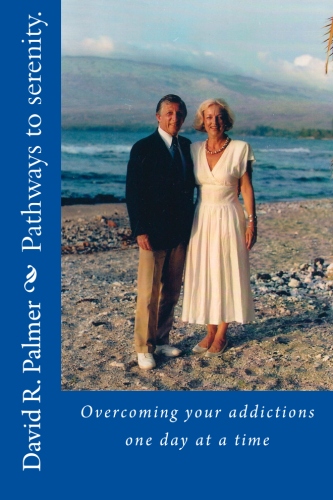One in eight Arkansas adolescents has taken a prescription pain reliever medication illegally. One in 20 has done so in the past 30 days. And nearly seven percent admit to using an over-the- counter medication to get high, half of them within the past month.
 Surveys also show that teenagers are more likely to have abused prescription and over-the-counter drugs than street drugs like ecstasy, cocaine, crack and methamphetamines.
Surveys also show that teenagers are more likely to have abused prescription and over-the-counter drugs than street drugs like ecstasy, cocaine, crack and methamphetamines.
Why is this important to know and deal with? Because prescription drugs can kill, maim and fuel other drug abuse.
The abuse of these potent drugs can damage evolving young brains, and they are sometimes deadly. From 2003 to 2007, 15 Arkansas children aged 12 to 17 died as a result of an overdose involving prescription drugs, seven of them from the pain relievers oxycodone and hydrocodone.
So where are these adolescents getting their prescription drugs? Mostly, as it turns out, from their parents’ or grandparents’ medicine cabinets. It’s easy (60 percent of the teens say so), and it doesn’t cost them a dime.
In response to the growing problem, Fran Flener, state drug director, launched a statewide campaign to years ago, basically on a shoestring, to increase public awareness of the problem.
The thrust of the campaign is that parents, grandparents, guardians, and trusted adults have a key role to play helping the children in their care avoid the dangers caused by prescription drug abuse. The majority of teens report that their parents, not their peers or the media, have the biggest impact on their decision to stay drug free.
Just talking with your kids about the dangers of using prescription drugs is a good beginning, studies show. It can cut the risk in half. Parents should also learn the signs and symptoms of prescription drug abuse — like indications of depression or suspicions of missing drugs — and seek professional help.
Here are some of the things parents can do to reduce the risks of drug abuse in the home:
• Have family dinners. Eating dinner together 5 to 7 nights a week as opposed to 0 to 2 nights
• Set and enforce a curfew, and monitor your teens’ late-night activities
• Lead by example — be a good role model. Don’t use illegal drugs. Don’t get drunk. Don’t smoke
• Don’t assume your teenager or his/her friends have not, do not, or will not use prescription drugs because they are “good kids” Plenty of good kids make bad choices, and
• Never give your prescription medications to anyone else, for any reason. It’s illegal and potentially could cause the start of someone else’s addiction.
These actions coupled with keeping prescription drugs in the home away from children can make a big difference. The keys to success are condensed into three words: “monitor, secure and dispose.”
As to monitoring, parents should take note of how many pills are in each prescription bottle or packet, keep track of refills, and if your teen has been prescribed a drug, control the medication and monitor the dosages and refills.
Concerning the securing of drugs, parents should keep all medicines, both prescription and over-the-counter, in a safe place, such as a locked cabinet. Also, tell relatives, especially grandparents, to lock up or hide their medications. Finally, talk to the parents of your teenager’s friends. Encourage them to secure their prescriptions.
Finally, discard expired or unused prescription drugs. First mix the drug with an undesirable substance such as used coffee grounds, kitty litter, or dirt to discourage use, put it in an empty can or bag and then into the trash.
Do not, authorities say, return unused portions of prescriptions to pharmacists. By law, they cannot accept them. Many drugs should not be flushed down the toilet where they may contaminate the water supply, but the list of 30 which can be flushed (accessible on the Internet) does include powerful drugs like Demerol, Oxycontin, Percocet, morphine sulfate, methadone and Fentora.
Gaining an understanding of why teenagers want to use prescription drugs is helpful, and here are the top reasons they gave in a recent survey:
• To deal with the pressures and stress of school (73%).
• To feel better about themselves (65%)
• To look cool (65%)
• To deal with problems at home (55%), and
• Being high feels good (40%).
Kids exposed to a high level of risk factors (such as availability of drugs, family conflict, parental attitude favorable towards drug use, poor performance in school and depression, for example) are more apt to abuse drugs.
By the same token, kids with a high level of “protective factors” (such as positive peers, religious involvement, academic accomplishment, involvement in pro-social activities, and strong family environment) are less apt to abuse.
Still, prescription drugs, mainly due to their widespread availability, should be considered a threat to all teens. Access is the issue. While all teens should be considered to be “at risk” for prescription drug abuse, a soon-to-be-released report by DHS, Division of Behavioral Health Services shows demographic variations. In Arkansas:
• Girls abuse and are significantly more likely to abuse prescription drugs than boys. Typically, with alcohol and drug abuse, it is the reverse
• Depressed students report significantly more over-the-counter and prescription drug abuse, and
• Children in foster care abuse prescription drugs more than children in any other type living situation. This does not hold true for alcohol and the majority of other drugs.
In addition to the Office of the Drug Director, there are other state offices working on the teen abuse of drugs Arkansas. They include: the Attorney General’s Office, the Department of Human Services, the Office on Alcohol and Substance Abuse Prevention and the U.S. Attorney’s Office.



